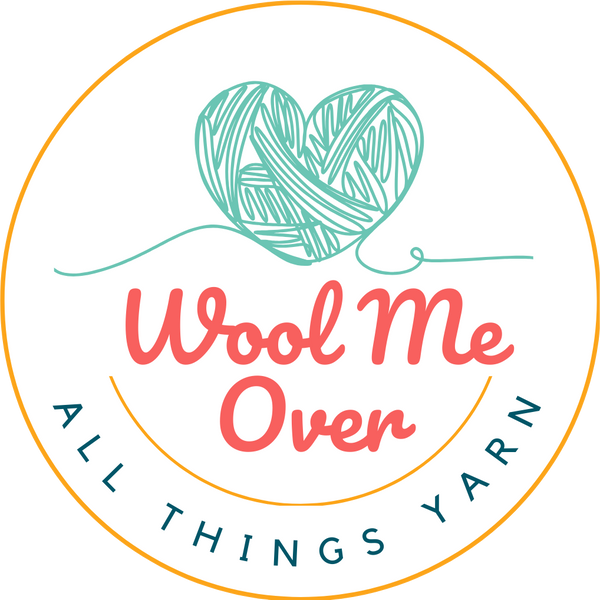
Don't Unravel: Best Tips for Picking the Right Yarn for Your Project
Share
Choosing the right yarn is just as important as choosing the perfect pattern or equipment when constructing something beautiful. There are so many textures, fibres, and weights to choose from that it can be hard to know where to start. Don't worry, though; we're here to help you avoid the pitfalls and get your next project off to a great start.
1. Choose the right yarn for your project
Different fibres serve diverse functions, and not all yarns are the same. Cotton yarn is great for summer clothes, dishcloths, and baby goods since it lets air in, absorbs water, and can be washed in a machine. The silky texture also makes stitch definition seem superb, which is great for complicated patterns.
Merino wool, on the other hand, is valued for its warmth, softness, and stretchiness. It's great for making warm winter clothes like sweaters, scarves, and beanies. Because it is made of natural fibres, it also does a great job of keeping body temperature stable, which makes it even more useful.
2. Learn about the many types of fibre
Every fibre has its own texture, strength, and maintenance needs. For example, acrylic yarn is a synthetic choice that is cheap, easy to get, and easy to launder. It's a wonderful choice for people who are just starting out or for things like blankets that need to be able to take a lot of use.
Mohair is the best choice if you want something fancy and luxurious. This soft, light fibre comes from the Angora goat and is sometimes mixed with silk or nylon. It's great for shawls that are light and airy and for making a statement, but it's not the easiest to frog (undo), so it's better to use it once you've had some practice.
People prize natural and airy cotton yarn for its exceptional absorbency, softness, and durability. Because it is mild on the skin, it is perfect for home textiles, baby products, and clothing. Cotton yarn is easy to maintain, softens with each wash, and maintains its shape nicely. Its cooling qualities make it ideal for warm-weather tasks, and it also has a matte finish.
Bamboo yarn is another option; it's good for the environment and very soft. It has a silky drape and a natural shine, which makes it a beautiful choice for summer shirts, light wraps, or baby clothes. Bamboo also contains antimicrobial characteristics, which is a plus for things that will be worn close to the skin.
Merino wool is highly valued because of its remarkable warmth, breathability, and softness. In contrast to ordinary wool, it is naturally moisture-wicking and feels silky on the skin, which helps to keep you dry and control body temperature. It is perfect for tailored clothing and warm winter accessories because it is odor-resistant, biodegradable, and naturally stretchy. Merino wool is ideal for year-round comfort and luxury in handcrafted items since it is both lightweight and insulating.
3. Think about the weight and gauge of the yarn.
Before you start knitting, make sure you have the right weight of yarn for your pattern. This could be lace, DK, worsted, or chunky yarn. If you use the right weight with the suitable needles or hook, your finished product will be the ideal size and drape. If the weight or gauge is wrong, it can change the look and fit of your creation dramatically.
4. Before you sew, make a swatch
Always make a swatch! It might seem like a hassle, but it's important to check your tension, how the yarn acts, and how it looks with the stitch pattern you've chosen. This is also critical when working with fibres like mohair or bamboo yarn, which act very differently from regular wool or acrylic yarn.
Last Thoughts
There is a perfect yarn for any project, whether you like the softness of merino wool, the smooth touch of cotton yarn, the ease of working with acrylic, the fluffiness of mohair, or the drape of bamboo yarn. If you take a little extra time to match the correct fibre with the proper pattern, you'll be well on your way to a creation that looks great and lasts.
Use this quick-reference guide to compare popular yarn types by fibre, feel, durability, and best uses.
|
Yarn Type |
Fibre Origin |
Texture/Feel |
Durability |
Best For |
Care |
|
Cotton |
Natural (plant) |
Smooth, breathable |
Moderate |
Summer garments, baby items, dishcloths |
Machine washable |
|
Merino Wool |
Natural (animal) |
Soft, springy, warm |
Good |
Sweaters, scarves, beanies |
Hand wash or gentle |
|
Acrylic |
Synthetic |
Soft, sometimes scratchy |
High |
Blankets, beginner projects, toys |
Machine washable |
|
Mohair |
Natural (animal) |
Fluffy, airy |
Moderate |
Shawls, fashion items |
Hand wash, lay flat |
|
Bamboo |
Semi-natural |
Silky, drapey, smooth |
Low to moderate |
Lightweight tops, wraps, baby wear |
Hand wash recommended |
|
Alpaca |
Natural (animal) |
Very soft, silky, warm |
Good |
Cozy winterwear, accessories |
Hand wash, lay flat |
|
Linen |
Natural (plant) |
Crisp, improves with wash |
High |
Summer clothing, home décor |
Machine washable (cool) |
Top of Form
Bottom of Form
